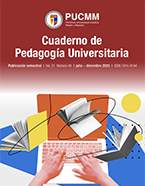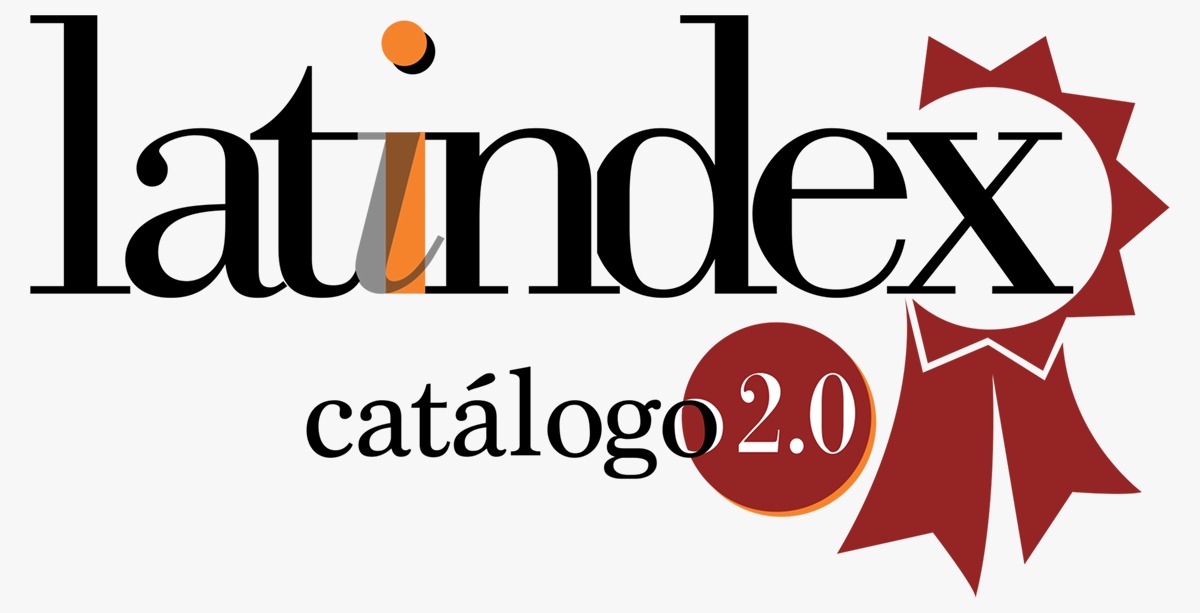Play as an experience for the valuation of territorial identity in young people from sacrifice zones
DOI:
https://doi.org/10.29197/cpu.v21i40.521Keywords:
Youths, narratives, gamification, learningAbstract
This case study is the result of a pilot experience of redefining the territorial identity of youth from the Quintero commune, an area called environmental sacrifice, in the Valparaíso region, through a process of identification and construction based on self-perception and the role of citizens and inhabitants of the place from the digital memory. The objective of this paper is to show gamification as a transmedia learning experience, and the problem-based teaching-learning methodology (ABP), in the construction of youth narratives that inhabit vulnerable areas. This educational innovation model was developed with game dynamics supported by digital culture practices for the creation of content based on a participatory and collective dynamic. The students who voluntarily participated in the event belong to five subsidized and public educational establishments in the area, who experienced three clinics called: Digital Creativity, Digital Entrepreneurship and Digital Memory in which they co-created their proposals. The case study presented in this article accounts for the last of them. Among the main findings, it is possible to highlight the narrative and creative capacities of youth to modify the negative self-perception of the place they inhabit and move towards a valuation of themselves and their environment through the hybridity of the use of technology for the educational purpose. Finally, it is possible to state that gamification contributes to problem solving, collaborative learning and the reconstruction of meanings for a new story from the subjectivity of the new public space.
Metrics
References
Bauman, Z. (2003). Modernidad líquida (M. Rosenberg, Trad.). Fondo de Cultura Económica.
Biblioteca del Congreso Nacional [BCN] (2021). Quintero Reporte Comunal 2021. https://tinyurl.com/yb8p67fm
Buitrago, O. (2019). El poder didáctico de las historias. Alfaomega.
Buster, B. (2021). Storytelling. Cómo contar tu historia para que el mundo quiera escucharla. Ariel.
Calvo, S. (2019). Cultura e identidades digitales: la socialización líquida y su influencia en la construcción del self. Astrolabio, Revista Internacional de Filosofía, (23), 241-250.
Castells, M. (2020). Ruptura. La crisis de la democracia liberal (3ª ed.). Alianza.
Castells, M. (2012). Redes de indignación y esperanza (M. Hernandez, Trad.). Alianza.
Castillo, M. y Ramírez, M. (2020). Experiencia de enseñanza usando metodologías activas, y tecnologías de información y comunicación en estudiantes de medicina del ciclo clínico. Formación universitaria, 13(3), 65-76. https://dx.doi.org/10.4067/S0718-50062020000300065
Cornella, A. (2004). Infoxicación: buscando un orden en la información. Libros Infonomia.
Espinoza, E. (2021). El aprendizaje basado en problemas, un reto a la enseñanza superior. Conrado, 17(80), 295-303. https://tinyurl.com/7h66v39e
González, S., Cortés, J. y Lugo, N. (2019). Percepciones de docentes universitarios en el uso de plataformas tecnológicas gamificadas. Experiencias en un taller de formación. Innovación educativa , 19(80),33-55. https://tinyurl.com/yk2bwt7j
Han, Byung-Chul (2012). La sociedad del cansancio (A. Saratxaga, Trad.). Herder.
Han, Byung-Chul (2022). Infocracia (J. Chamorro, Trad.). Herder.
Hoskins, A. (2017). Digital Memory Studies. Media pasts in transition [Estudios de memoria digital. Pasados de los medios en transición]. Routledge
Jenkins, H. (2008). Cultura de la Convergencia (P. Hermida, Trad.). Paidós. (Trabajo original publicado en el 2006).
Levy, P. (2007). Cibercultura. Anthropos.
Lugo, N. (2022). De las narrativas transmedia al diseño de aprendizaje transmedia.Universidad Iberoamericana León.
Lugo, N. (2016). Diseño de narrativas transmedia para la transalfabetización [Tesis doctoral, Universidad Autónoma de Barcelona]. e-Repositori. https://tinyurl.com/478xw88d
Márquez, A. y García, J. (2022). Metodologías activas y diseño universal para el aprendizaje. Journal of Neuroeducation, 3(1), 109-118.
Nigro, P y Farré, M. (2022). Libro blanco de la conversación. Biblos.
Pacheco, A. y Garnica, F. (2022). Los hábitos informativos de juventudes mediados por el hipertexto. Caso de estudio. Cuaderno de Pedagogía Universitaria. 20(39). 62-71. https://doi.org/10.29197/cpu.v20i39.482
Riorda, M. y Bentolila, S.(2020). Cualquiera tiene un plan hasta que te pegan en la cara. Aprender de las crisis. Paidós.
Scolari, C., Lugo, N., y Masanet, M. (2019). Educación Transmedia. De los contenidos generados por los usuarios a los contenidos generados por los estudiantes. Revista Latina de Comunicación Social, (74), 116–132. https://doi.org/10.4185/RLCS-2019-1324
Scribano, A. (2009). A modo de epílogo ¿Por qué una mirada sociológica de los cuerpos y las emociones? En C. Figari y A. Scribano. (Comp.). Cuerpo (s), Subjetividad (es) y Conflicto (s). Hacia una sociología de los cuerpos y emociones desde Latinoamérica (pp. 141-151). Centro de Integración, Comunicación, Cultura y Sociedad. https://acortar.link/eb2KUI
Subirats, J. (Dir.) (2015). Ya nada será lo mismo. Los efectos del cambio tecnológico en la política, los partidos y el activismo juvenil. Centro Reina Sofía sobre Adolescencia y Juventud.
Touraine, A. (2000). ¿Podremos vivir juntos? Iguales y diferentes (H. Pons, Trad, 2ª ed.). Fondo de Cultura Económica (FCE). (Trabajo original publicado en 1997).
Travieso, D. y Ortiz, T. (2018). Aprendizaje basado en problemas y enseñanza por proyectos: alternativas diferentes para enseñar. Revista Cubana de Educación Superior, 37(1), 124-133. https://acortar.link/eb2KUI
Vivanco, E. (2022). Zonas de sacrificio en Chile: Quintero-Puchuncaví, Coronel, Mejillones, Tocopilla y Huasco. Componente industrial y salud de la población. Biblioteca del Congreso Nacional de Chile (BCN).https://tinyurl.com/5e3z73nt
Published
How to Cite
Issue
Section
License
Unless otherwise indicated, all articles in this journal are published under a
Licencia Internacional Creative Commons 4.0 Atribución-NoComercial-CompartirIgual .
The authors retain the copyright and assign the right to the first publication to the magazine.









